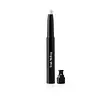What's inside
What's inside
 Key Ingredients
Key Ingredients

 Benefits
Benefits

 Concerns
Concerns

 Ingredients Side-by-side
Ingredients Side-by-side

Diisostearyl Malate
EmollientHydrogenated Polyisobutene
EmollientPhytosteryl/Isostearyl/Cetyl/Stearyl/Behenyl Dimer Dilinoleate
Skin ConditioningHydrogenated Poly(C6-14 Olefin)
EmollientPolybutene
Butyrospermum Parkii Butter
Skin ConditioningSynthetic Wax
AbrasiveEthylene/Propylene/Styrene Copolymer
Tocopherol
AntioxidantEthylhexylglycerin
Skin ConditioningGlyceryl Caprylate
EmollientCandelilla Wax Esters
Butylene/Ethylene/Styrene Copolymer
Copernicia Cerifera Cera
EmollientDimethicone
EmollientMethicone
EmollientPolyglyceryl-2 Triisostearate
EmulsifyingMica
Cosmetic ColorantCI 15850
Cosmetic ColorantCI 15985
Cosmetic ColorantDiisostearyl Malate, Hydrogenated Polyisobutene, Phytosteryl/Isostearyl/Cetyl/Stearyl/Behenyl Dimer Dilinoleate, Hydrogenated Poly(C6-14 Olefin), Polybutene, Butyrospermum Parkii Butter, Synthetic Wax, Ethylene/Propylene/Styrene Copolymer, Tocopherol, Ethylhexylglycerin, Glyceryl Caprylate, Candelilla Wax Esters, Butylene/Ethylene/Styrene Copolymer, Copernicia Cerifera Cera, Dimethicone, Methicone, Polyglyceryl-2 Triisostearate, Mica, CI 15850, CI 15985
Isododecane
EmollientDiisostearyl Malate
EmollientSynthetic Wax
AbrasiveSynthetic Fluorphlogopite
Dimethicone
EmollientCaprylyl Methicone
Skin ConditioningPolybutene
Dimethicone/Vinyl Dimethicone Crosspolymer
Skin ConditioningSilica
AbrasiveDimethylimidazolidinone Rice Starch
AbsorbentGlyceryl Caprylate
EmollientDistarch Phosphate
AbsorbentPentaerythrityl Tetra-Di-T-Butyl Hydroxyhydrocinnamate
AntioxidantIsoceteth-10
EmulsifyingMica
Cosmetic ColorantCI 15850
Cosmetic ColorantCI 15985
Cosmetic ColorantCI 19140
Cosmetic ColorantBlue 1 Lake
Cosmetic ColorantCI 45380
Cosmetic ColorantCI 73360
Cosmetic ColorantCI 77163
Cosmetic ColorantCamellia Sinensis Leaf Extract
AntimicrobialBronzite Powder
Cosmetic ColorantCopper Powder
AntimicrobialIron Oxides
CI 77742
Cosmetic ColorantZinc Oxide
Cosmetic ColorantCI 75470
Cosmetic ColorantTitanium Dioxide
Cosmetic ColorantIsododecane, Diisostearyl Malate, Synthetic Wax, Synthetic Fluorphlogopite, Dimethicone, Caprylyl Methicone, Polybutene, Dimethicone/Vinyl Dimethicone Crosspolymer, Silica, Dimethylimidazolidinone Rice Starch, Glyceryl Caprylate, Distarch Phosphate, Pentaerythrityl Tetra-Di-T-Butyl Hydroxyhydrocinnamate, Isoceteth-10, Mica, CI 15850, CI 15985, CI 19140, Blue 1 Lake, CI 45380, CI 73360, CI 77163, Camellia Sinensis Leaf Extract, Bronzite Powder, Copper Powder, Iron Oxides, CI 77742, Zinc Oxide, CI 75470, Titanium Dioxide
Ingredients Explained
These ingredients are found in both products.
Ingredients higher up in an ingredient list are typically present in a larger amount.
Ci 15850 is the pigment color red. It is an azo dye and created synthetically.
Azo dyes need to be thoroughly purified before use. This allows them to be more stable and longer-lasting.
This ingredient is common in foundations, lipsticks, and blushes. This color is described as brown/orangey red.
It has many secondary names such as Red 6 and Red 7. According to a manufacturer, Red 6 usually contains aluminum.
Learn more about CI 15850Ci 15985 is a dye made from petroleum. It is synthetically created and approved by the FDA for use in foods and cosmetics.
The color of this dye is orange/yellow.
This ingredient can be found in makeup, sun care, and skincare.
Learn more about CI 15985Diisostearyl Malate is an emollient and most often used in lip products. It comes from isostearyl alcohol, a fatty acid, and malic acid, an AHA.
As an emollient, Diisostearyl Malate helps create a thin film on your skin to trap moisture in. This helps keep your skin soft and smooth.
Dimethicone is a type of synthetic silicone created from natural materials such as quartz.
What it does:
Dimethicone comes in different viscosities:
Depending on the viscosity, dimethicone has different properties.
Ingredients lists don't always show which type is used, so we recommend reaching out to the brand if you have questions about the viscosity.
This ingredient is unlikely to cause irritation because it does not get absorbed into skin. However, people with silicone allergies should be careful about using this ingredient.
Note: Dimethicone may contribute to pilling. This is because it is not oil or water soluble, so pilling may occur when layered with products. When mixed with heavy oils in a formula, the outcome is also quite greasy.
Learn more about DimethiconeGlyceryl Caprylate comes from glycerin and caprylic acid, a fatty acid from coconut. It has emollient and emulsifier properties.
As an emollient, it helps hydrate your skin. Emollients work by creating a barrier on your skin to trap moisture in, helping to keep your skin soft and smooth.
On the other hand, emulsifiers prevent ingredients (such as oil and water) from separating.
Learn more about Glyceryl CaprylateMica is a naturally occurring mineral used to add shimmer and color in cosmetics. It can also help improve the texture of a product or give it an opaque, white/silver color.
Serecite is the name for very fine but ragged grains of mica.
This ingredient is often coated with metal oxides like titanium dioxide. Trace amounts of heavy metals may be found in mica, but these metals are not harmful in our personal products.
Mica has been used since prehistoric times throughout the world. Ancient Egyptian, Indian, Greek, Roman, Aztec, and Chinese civilizations have used mica.
Learn more about MicaPolybutene is used to help control the viscosity of a product. This just means it helps adjusts the texture.
It is a polymer and does not get absorbed into the skin due to its large size.
Studies found this ingredient did not irritate skin in concentrations below 15%.
Learn more about PolybuteneSynthetic Wax is created from fossil fuels such as natural gas. It is used to enhance texture, adjust pH, and as an occlusive.
It may also be used as an abrasive ingredient to exfoliate the skin.
Synthetic Wax may not be fungal acne safe.
Learn more about Synthetic Wax